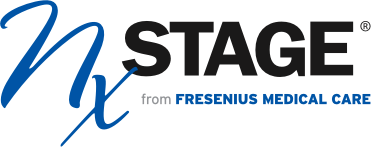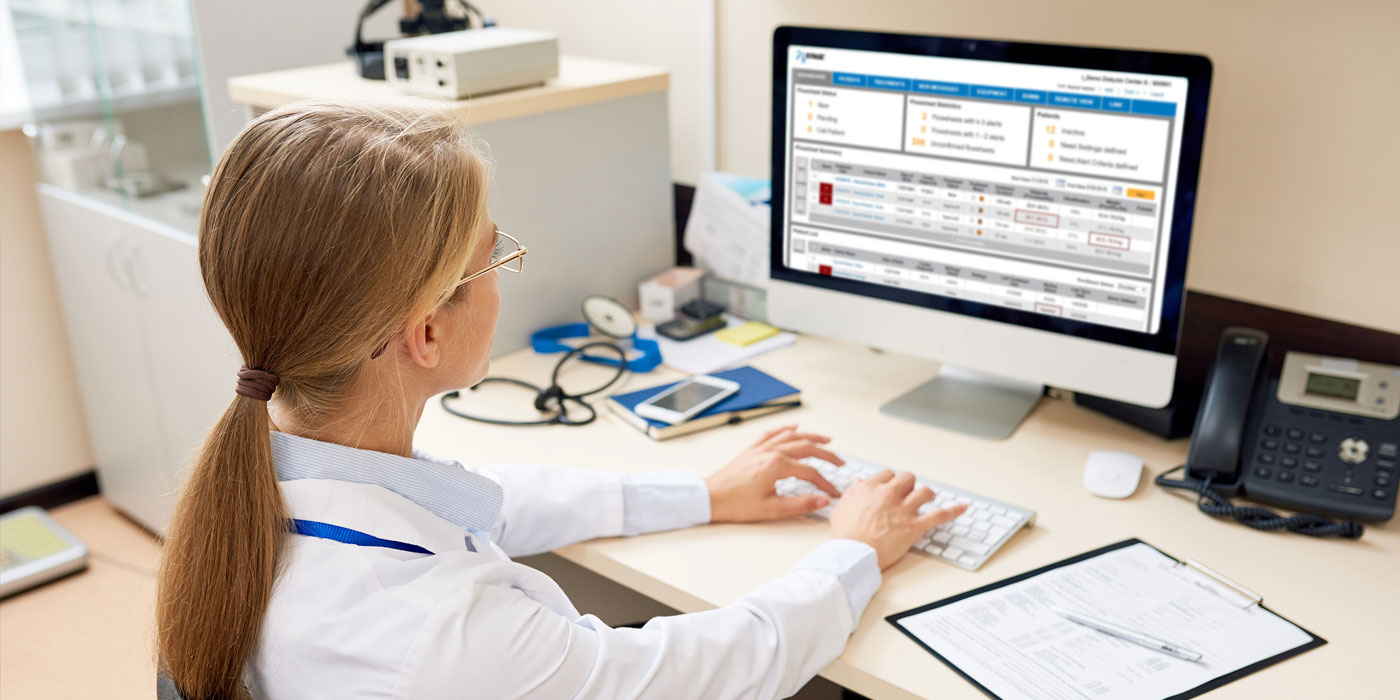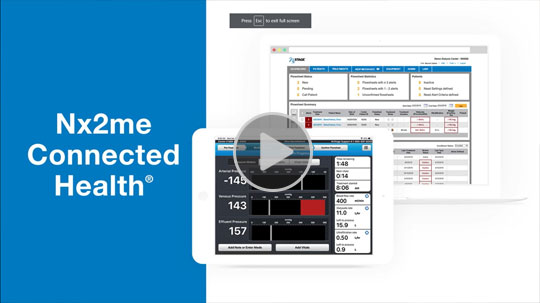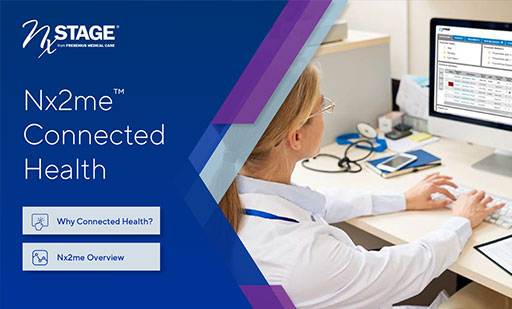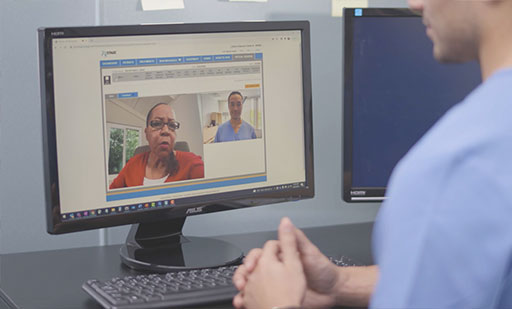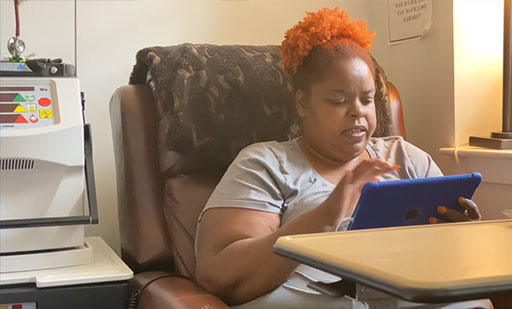Contact Us For More Information
Nx2me Connected Health is designed to help you

- Monitor and support patient adherence and potentially reduce complications
- Reduce patient burden and enhance patient confidence
- Increase patient retention through compliance monitoring and enhanced connection with patients
- Reduce effort involved in collecting flowsheets
Quality of Care: Key Potential Benefits
Adherence
Early intervention
Alerts
Data captured from patients and available to clinicians
Data collected by the Nx2me app includes:
- Treatment information directly from the Cycler*
- Patient weight, blood pressure, and temperature
- Medications taken
- Notes and health assessments
Nx2me also offers:
- Picture attachments to flowsheets
- Bi-directional messaging
- Alarm troubleshooting
Nx2me works over a secure Wi-Fi network established at the patient’s home. If a patient doesn’t have Internet service, a cell data plan is available. All patient information is encrypted and transmitted using secure Internet protocols.
*The Nx2me app does not control the Cycler.

Nx2me® has shown to improve patient retention by monitoring compliance, early intervention and education.1
Lower therapy discontinuation rate due to controllable causes
Reduction in median training time
Nx2me Resources
Bluetooth is a registered trademark of SIG, Inc.
References
- Weinhandl E, Collins A. Relative Risk of Home Hemodialysis Attrition in Patients Using a TeleHealth Platform. Hemodialysis International. December 2017.
Risks and Responsibilities
The reported benefits of home hemodialysis (HHD) may not be experienced by all patients.
The NxStage system is a prescription device and, like all medical devices, involves some risks. The risks associated with hemodialysis treatments in any environment include, but are not limited to, high blood pressure, fluid overload, low blood pressure, heart-related issues, and vascular access complications. When vascular access is exposed to more frequent use, infection of the site, and other access related complications may also be potential risks. The medical devices used in hemodialysis therapies may add additional risks including air entering the bloodstream, and blood loss due to clotting or accidental disconnection of the blood tubing set.
Home hemodialysis with the NxStage system during waking hours may not require a care partner, provided a physician and a qualified patient agree that solo home hemodialysis is appropriate. Patients performing nocturnal treatments are required to have a care partner. Care partners are trained on proper operation and how to get medical or technical help if needed.
Certain risks associated with hemodialysis treatment are increased when performing solo HHD because no one is present to help the patient respond to health emergencies. If patients experience needles coming out, blood loss, or very low blood pressure during solo HHD, they may lose consciousness or become physically unable to correct the health emergency. Losing consciousness or otherwise becoming impaired during any health emergency while alone could result in significant injury or death. Additional ancillary devices and training are required when performing solo HHD.
Certain risks associated with hemodialysis treatment are increased when performing nocturnal therapy due to the length of treatment time and because therapy is performed while the patient and care partner are sleeping. These risks include, but are not limited to, blood access disconnects and blood loss during sleep, blood clotting due to slower blood flow and/or increased treatment time, and delayed response to alarms when waking from sleep.
Patients should consult their doctor to understand the risks and responsibilities of performing these therapies using the NxStage system.


